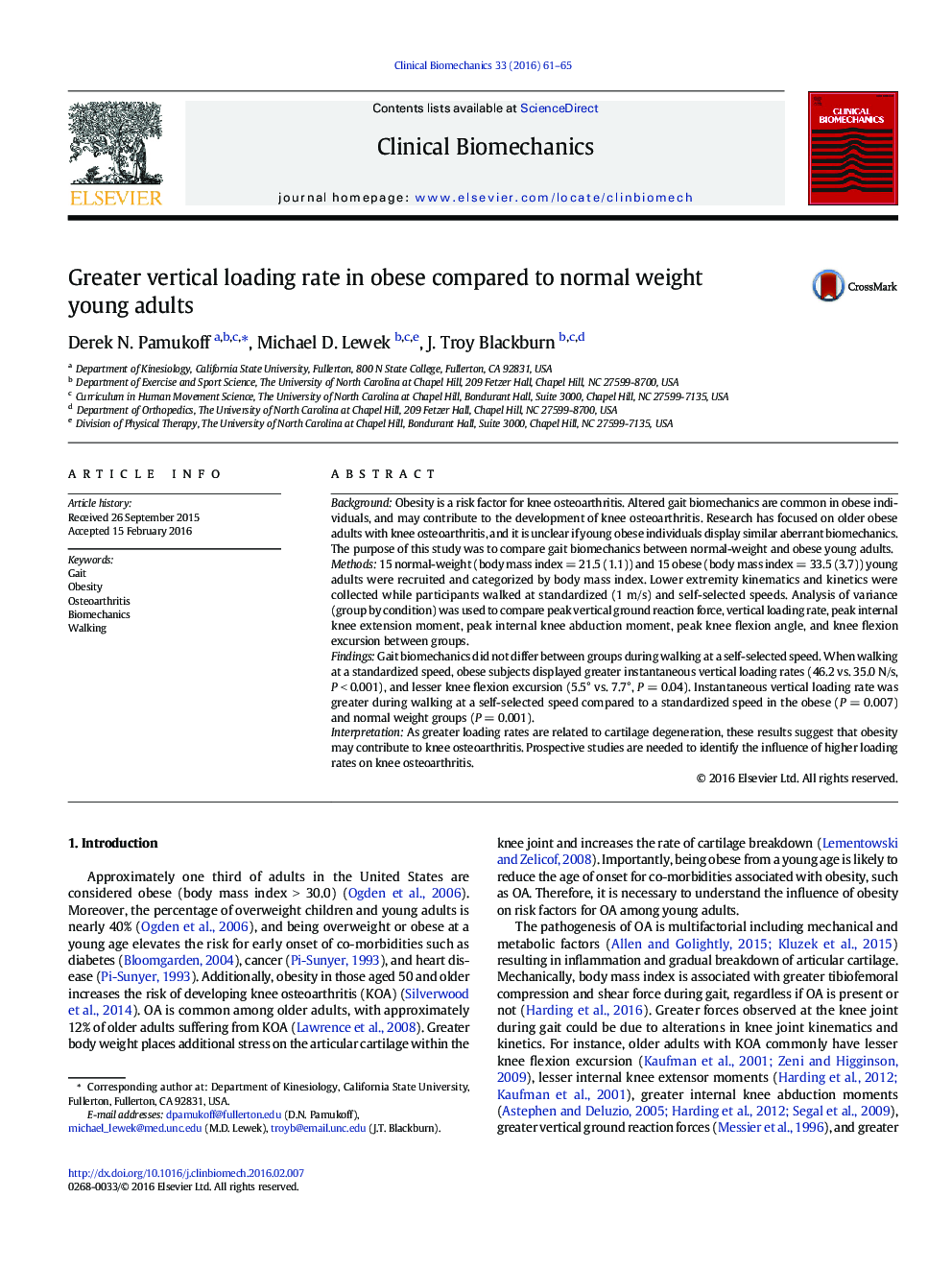| کد مقاله | کد نشریه | سال انتشار | مقاله انگلیسی | نسخه تمام متن |
|---|---|---|---|---|
| 4050133 | 1603745 | 2016 | 5 صفحه PDF | دانلود رایگان |
• Obese adults have a greater instantaneous loading rate compared to normal weight adults.
• Obese adults have lesser knee flexion excursion compared to normal weight adults.
• Greater loading rate and lesser knee flexion may contribute to knee osteoarthritis.
BackgroundObesity is a risk factor for knee osteoarthritis. Altered gait biomechanics are common in obese individuals, and may contribute to the development of knee osteoarthritis. Research has focused on older obese adults with knee osteoarthritis, and it is unclear if young obese individuals display similar aberrant biomechanics. The purpose of this study was to compare gait biomechanics between normal-weight and obese young adults.Methods15 normal-weight (body mass index = 21.5 (1.1)) and 15 obese (body mass index = 33.5 (3.7)) young adults were recruited and categorized by body mass index. Lower extremity kinematics and kinetics were collected while participants walked at standardized (1 m/s) and self-selected speeds. Analysis of variance (group by condition) was used to compare peak vertical ground reaction force, vertical loading rate, peak internal knee extension moment, peak internal knee abduction moment, peak knee flexion angle, and knee flexion excursion between groups.FindingsGait biomechanics did not differ between groups during walking at a self-selected speed. When walking at a standardized speed, obese subjects displayed greater instantaneous vertical loading rates (46.2 vs. 35.0 N/s, P < 0.001), and lesser knee flexion excursion (5.5° vs. 7.7°, P = 0.04). Instantaneous vertical loading rate was greater during walking at a self-selected speed compared to a standardized speed in the obese (P = 0.007) and normal weight groups (P = 0.001).InterpretationAs greater loading rates are related to cartilage degeneration, these results suggest that obesity may contribute to knee osteoarthritis. Prospective studies are needed to identify the influence of higher loading rates on knee osteoarthritis.
Journal: Clinical Biomechanics - Volume 33, March 2016, Pages 61–65
